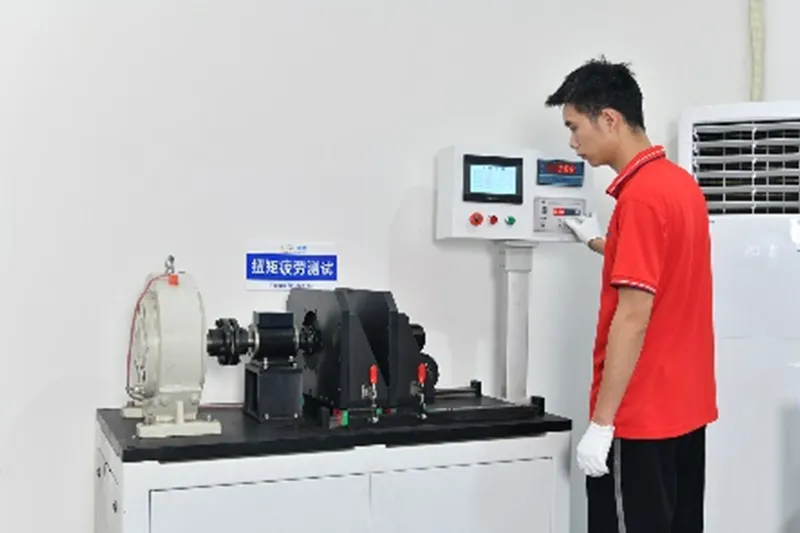Backlash Test
Backlash Testing: Guaranteeing Positional Accuracy and Repeatability
What Is Backlash Testing?
Backlash testing measures the rotational play between meshing gears inside a reducer. It is performed after assembly to verify the mechanical response of the system and to ensure that gear clearance stays within the desired range for high-precision motion applications.


What Defines a High-Quality Backlash Test?
Backlash measurement requires:
- Precision torque application tools
- Angular displacement gauges or dial indicators
- Defined torque loads for measurement consistency
- Documentation of actual return clearance (arc minutes)
This ensures the reducer meets target backlash values for its intended use.
Why Backlash Testing Matters for Planetary Reducers
Backlash directly affects control accuracy in servo and motion systems. Testing ensures:
- Precise positioning in repetitive motion cycles
- Stable performance at high speeds
- Reduced mechanical noise
- Lower wear on gears and bearings
Tightly controlled backlash is key for robotics, CNC, and automation.


How VIGE Conducts Backlash Testing
Every reducer model undergoes backlash inspection using:
- Torque-controlled backlash test rigs
- Calibration against standard test blocks
- Documentation by model and serial number
- Random sampling during mass production
Reducers are labeled with their backlash class (e.g., ≤15 arcmin).
Additional Benefits of Backlash Control
Maintaining tight backlash tolerances supports:
- Higher dynamic accuracy
- Smoother motion transitions
- Enhanced product consistency


